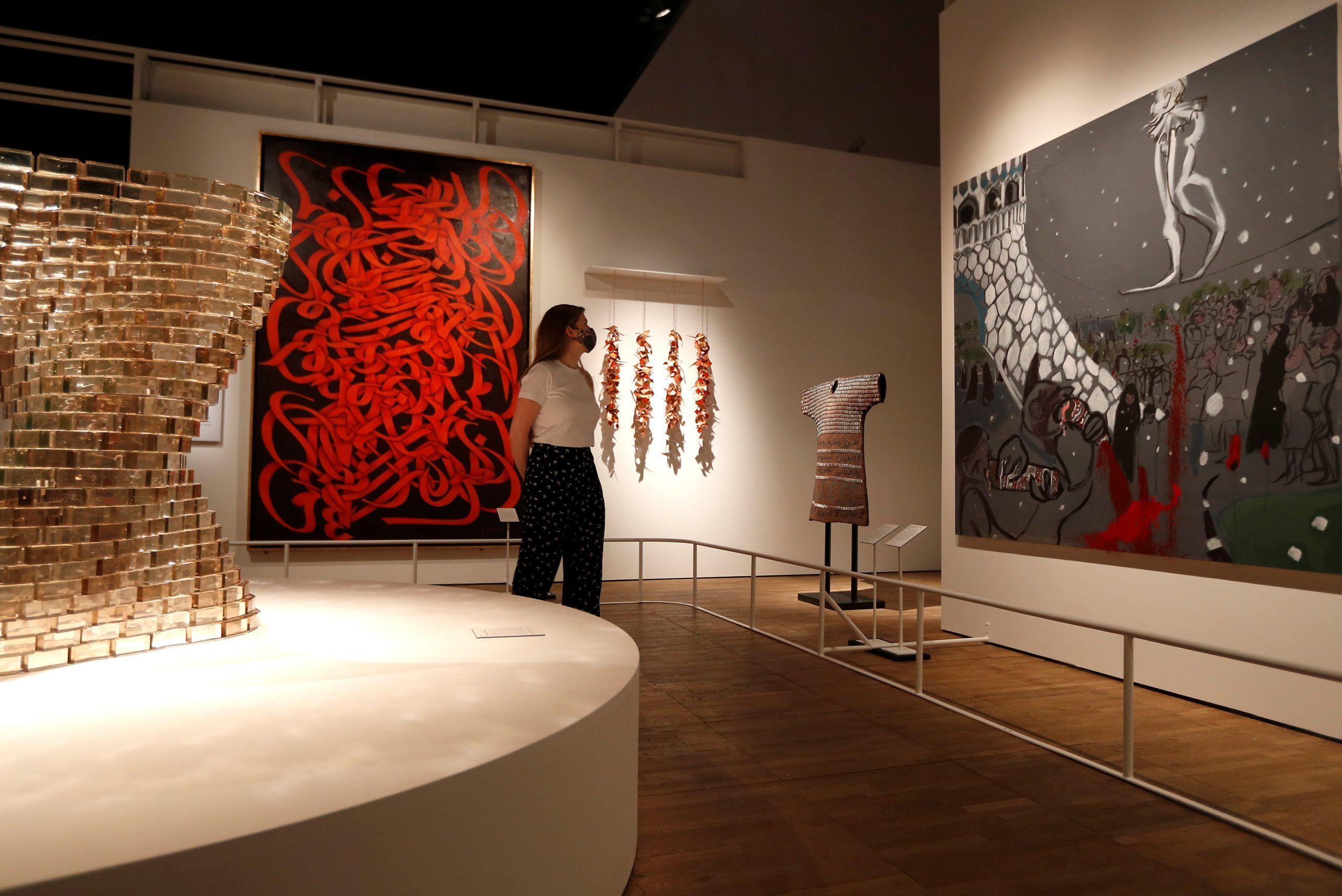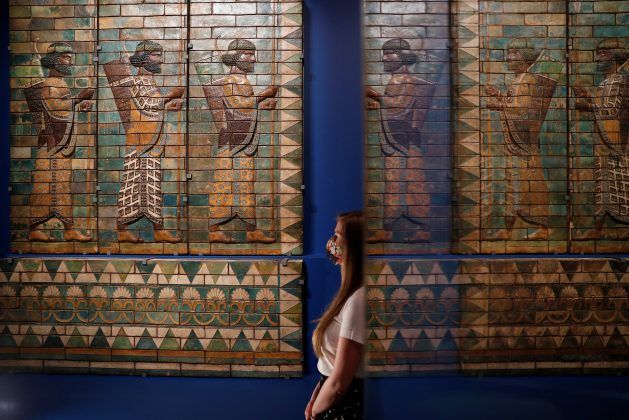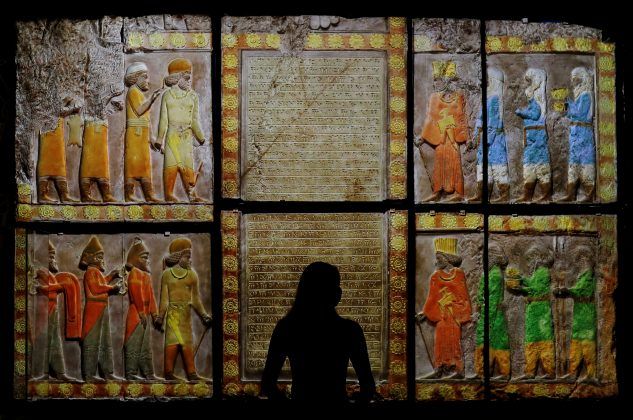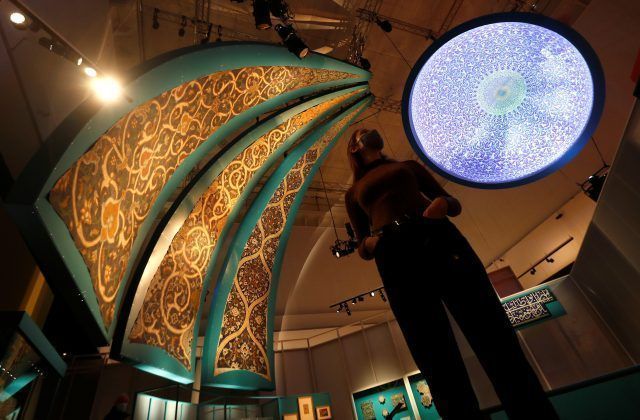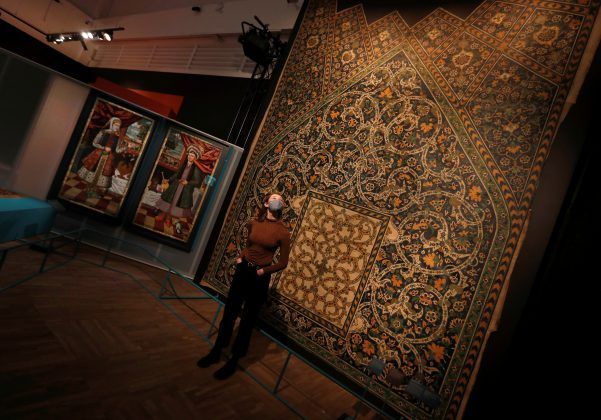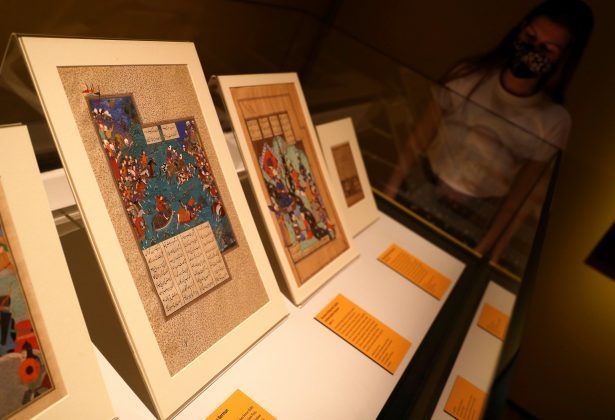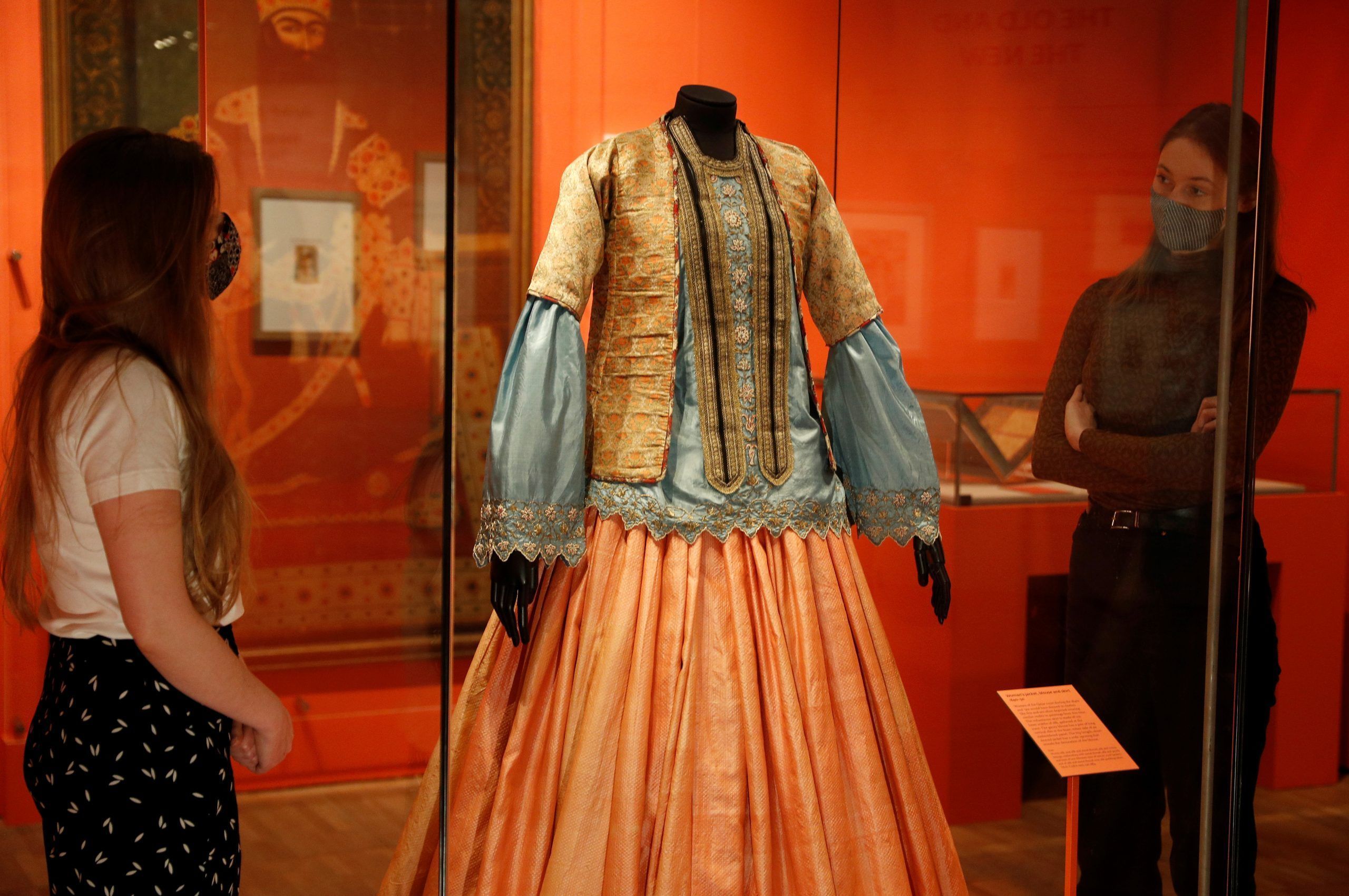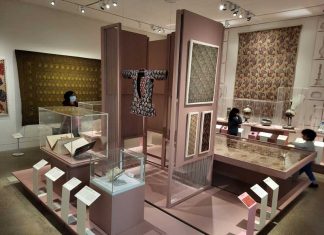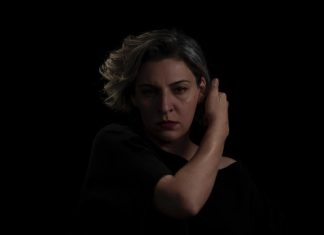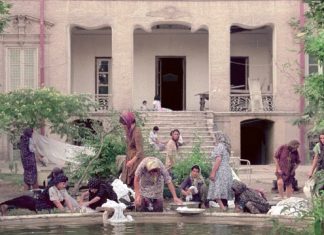By Tim Cornwell
How do you pack 5,000 years of Iranian art, architecture, archeology, culture, literature, religion, kingship, craftsmanship and contemporary art into the low-light, grey-walled temporary exhibition spaces of London’s Victoria and Albert Museum?
With a lot of hard work and imagination from top scholars in the field, artefacts gathered from around the world and a determination to tell a more positive story of Iran.
“Epic Iran” opened at the V&A this weekend with more than 300 objects displayed in specially designed museum environments that give a taste of the splendors of Persepolis and Isfahan. The exhibition, years in the planning, is a highlight of the post-Covid awakening of London’s cultural scene, and has received four- and five-star reviews in the British press.
“Epic Iran” is regarded as one of the most ambitious gatherings of Iranian objects in two decades, and while it has no loans from Iran, it has borrowed artefacts from such institutions as the Metropolitan Museum in New York, the Louvre Museum in Paris, and the State Hermitage Museum in St. Petersburg. Densely curated, it has wall texts that sometimes read like introductory lectures to an Iranian studies course. The span of time and the variety of work is overwhelming, and demands a second visit.
The exhibition begins with the dawn of history in Iran. There are “proto-Elamite” writing tablets from around 3,000 BC in a script that is still not completely understood. Discoveries in the last 30 to 40 years have overturned beliefs in the 1920’s and ‘30s that Iran’s early civilizations had less to offer than those of ancient Egypt or Mesopotamia, said co-curator Dr. John Curtis. Now, ancient Iran is firmly presented as just as wealthy and sophisticated.
“We know that Iran had a civilization every bit as prosperous and well developed as Mesopotamia,” he said.
One of the very first objects to greet the visitor is a gold mouflon head ornament, in the curving shapes of a wild sheep’s horns, about 4,000 years old. It belongs to the Sarikhani collection, a 21st-century family collection of Iranian artefacts that is getting its first public outing in Epic Iran, and is soon to collaborate in an exhibition at Berlin’s Pergamon Museum.
Nearby, a strange star attraction captures the eye: an inscribed brick that looks like a giant button or jeans stud, modelled in clay from about 1300 BC, with an inscription that records how the King of Elam built a temple for the moon god Sin. It comes from the Royal Museums of Art and History in Brussels.
In the rooms that follow, London visitors are introduced to a succession of dynasties — the Seleucids, the Sasanians and the Parthians — as well as to Ahuramazda (the Zoroastrian deity), the Shahnameh (the Book of Kings) and the Simorgh (a mythical bird) in rapid succession.
There are stunning displays in every section: cabinets of rhytons, elaborately decorated drinking horns, in clay, silver and gold are shown alongside British Museum casts from the palace of Darius at Persepolis, which have their bright original colors projected onto them.
The famous Cyrus Cylinder, with its inscriptions justifying Cyrus the Great’s conquest of Babylon and overthrow of the Babylonian king, is on loan from the British Museum, and appears surprisingly small.
[aesop_image img=”https://kayhanlife.com/wp-content/uploads/2021/05/2021-05-25T230305Z_1125204030_RC2WMN9PWIY3_RTRMADP_3_BRITAIN-MUSEUM-EPIC-IRAN-scaled.jpg” panorama=”off” credit=”An employee looks at The Cyrus Cylinder, loaned by the British Museum and on display at Epic Iran, an exhibition soon to open at the V&A in London, Britain, May 25, 2021. Picture taken May 25, 2021. REUTERS/Peter Nicholls” align=”center” lightbox=”on” captionsrc=”custom” captionposition=”left” revealfx=”off” overlay_revealfx=”off”]
Exquisite ancient gold work includes a miniature model of a chariot from the famous Oxus Treasure, held in the British Museum, with gold reins entangled in the gold manes of the horses. Dr. Curtis pointed to another gold rhyton from the Metropolitan Museum of Art in New York, an example of the luxurious lifestyle enjoyed by the Persian Empire’s elite, bearing a lion with a stylized mane. “A lot of very fine work is involved in it: It is a triumph of the goldsmith’s art,” he noted.
There is a substantial corner piece of carved stone figures from Persepolis in the exhibition, and two limestone heads. But whereas the Ottoman Sultans gave permission to 19th-century explorers to haul away the treasures of Nimrud and Nineveh (in present-day Iraq), “in Iran everything was deferred to the Shah, and permission was not ever given to take away from Persepolis,” Curtis said. Persepolis thankfully remained remarkably intact; a multi-screen video presents the site itself.
As the exhibition progresses in time to the last of the ancient empires, new treasures appear. They include a vase handle in bronze of a leaping Persian leopard. There’s a feeling of artistic playfulness in some of the Sasanian items, like a dish with a pheasant with curving feathers and a halo round its head, or a disc in silver with a toothy lion’s head.
Attention is drawn to a textile piece with the same haloed birds, in a pattern found on coins of Ardashir III (600-900), on loan to the show from the Jouarre Abbey in France, where it found its way at least 1,000 years ago. It is one of the finest pieces of silk surviving from that period.
The section on the Shahnameh, the Book of Kings, offers splendid illuminated pages that are a pleasure to linger over. One curiosity from the Royal Collection (held by Britain’s Queen Elizabeth II) is a page illuminated in brilliant blues and golds in which Isfandyar encounters the Simurgh.
[aesop_image img=”https://kayhanlife.com/wp-content/uploads/2021/01/Qaran-Unhorses-Barman-a-folio-from-the-Shahnameh-of-Shah-Tahmasp-about-1523–35.-I.MS_.4025.-Photo-©-The-Sarikhani-Collection-1-scaled.jpg” panorama=”off” credit=”Qaran Unhorses Barman, a folio from the Shahnameh of Shah Tahmasp, about 1523–35. I.MS.4025. Photo © The Sarikhani Collection” align=”center” lightbox=”on” captionsrc=”custom” captionposition=”left” revealfx=”off” overlay_revealfx=”off”]
Also on display is a page from the celebrated Shahnameh of Shah Tahmasp, a masterpiece of 17th-century Persian painting that was infamously dismembered and its pages put on sale by Arthur Houghton in the U.S. in the 1970s. With its deep greens and blues, it seems wonderfully different in coloring and style from, for example, other pages held by the Aga Khan Museum. This is the only nocturnal battle scene pictured in the epic; the Persians are shown unhorsing the Turanians with long lances, with the horses looking on aghast.
There are further manuscripts in the exhibition’s section on literary excellence. These alone are worth a second visit alone.
A section on Change of Faith — the cementing of Iran’s Shia identity — includes a quietly powerful leaf from a Qur’an manuscript, dating from about 700 AD, also from the Sarikhani collection.
Nearby, from the Louvre, is a striking large watercolor of a veiled horseman: the eighth imam, Ali Reza, driving his lance through the midriff of a lumbering red demon.
In a high-ceilinged middle room in the exhibition, the V&A has used ten-meter long, full-size paintings of Isfahan tile work, which were brought back from Isfahan to London in 1877 to recreate the feel of Isfahan’s architecture and colour. There are 39 of these pieces in the museum’s collections. A ceiling projection reproduces the vision of an Isfahan dome.
This is all part of the section called “Iran and the World,” in which V&A Middle East Department Senior Curator Tim Stanley artfully illustrates the myriad connections between the Iran of the Safavid dynasty (whose capital was Isfahan) and the rest of the world.
Exhibits run from books bound in Chinese-style lacquer, and blue-and-white ceramics also reflecting Iran’s ties with China, to glamorous portraits of Isfahan notables that were painted in a European style to appeal to European 17th-century collectors.
Curiosities to look for include a box of Isfahani paint pigments — brought back by R.M. Smith, a Scottish resident of Tehran and acquired for the V&A — and a 1900 painting titled “The Exorcist” that looks like Orientalism run riot, both vividly detailed and weirdly surreal, either by the legendary Kamal al-Molk (a famous painter and art instructor) or one of his pupils.
The exhibition closes with displays of modern and contemporary Iranian art. There are some stand-out pieces here, such as Marcos Grigorian’s powerful “Creation of the Planet,” a darkly swirling universe fashioned in soil, and Farideh Lashai’s poignant, clouded 2010 portrait of Muhammad Mossadegh, Iran’s prime minister in the 1950s, who became a hero after nationalizing Iran’s oil industry.
Khosrow Hassanzadeh’s “Khosrow,” with its flashing frame, is a witty and weird play on shrine portraits of martyrs. Elsewhere, Shiva Ahmadi’s “Oil Barrel #7” is studded with glittering Swarovski crystals.
In an apparent attempt to incorporate all of the big names, these works are crowded together on walls like random offerings at an art fair, losing their subtlety and meaning.
Still, for so many visitors, it will come as a surprise to learn that Iran even has a modern and contemporary art scene — let alone one with a good claim to being the most sophisticated in the Middle East. And as “Epic Iran” abundantly demonstrates, that scene draws deeply on thousands of years of culture.

